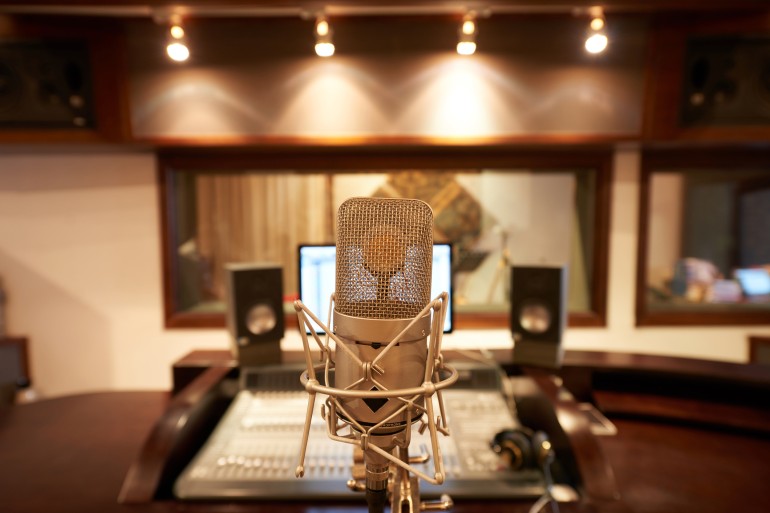Don’t Just Stand There – Sing Like it’s Live!
Recording studio vocals can be an unnerving, unnatural experience, particularly if you’re accustomed to playing and singing at the same time. Therefore, why not just do that?

In a recent MusicWorld column, I described recording some new demos live in the studio in order to capture that unique menagerie of sound that only occurs when everything is going down at once (“Tips For Recording in a Small Space”). It was during those sessions that I noticed that the vocals had a nice organic quality, something that’s often missing when overdubbing to a finished rhythm track. While some of that was due to the uncontrolled leakage from the adjacent drums and amps, there was something about playing and singing at the same time that resulted in these surprisingly fluid takes.
Which begs the question: since most of us write songs while accompanying ourselves on guitar or keyboard, then subsequently perform the finished works the same way, why do we always insist on standing empty handed in front of a big studio mic while singing along to a canned backing track? After all, getting a good vocal take isn’t just about having the right technology, but also using a little practical psychology. Therefore, consider the following when it’s time for your next session:
Record the vocal track live. Admittedly the most daring approach, this requires that the singer nails the take from start to finish (and the engineer properly situates the vocal mic in the room), since any bleed from nearby instruments will make it impractical to punch in later on. But as noted above, recording vocals live can often be a worthy exercise, particularly if you’re willing to forego perfection in favor of performance.
Keep your hands busy. If you prefer to overdub your vocals once the track is finished, try strapping on an unplugged electric guitar or using a digital piano with the volume on low, and then play along while the track is rolling. Not only will this give your hands something to do while you’re singing, it also allows you to approach the song as if you were performing it live (I even went so far as to erect a compact wooden stage in my studio in order to replicate the feel of a small club just for this purpose).
The comfort factor. Putting a singer with little recording experience into a room with nothing but a scary recording microphone is likely to trigger a wave of paranoia—“oh boy, this is the take, I’d better get it right!” Next time, try using a plain old, non-threatening performance mic such as a Shure or AKG dynamic; for that matter, you could even consider giving them a hand-held mic so they can roam around the room while recording. Sure, the hotter level and broader pickup pattern of a studio condenser may be the most logical choice from a technical standpoint, however don’t discount the benefits of making the singer feel as comfortable as possible






Community
Connect with BMI & Professional Songwriters